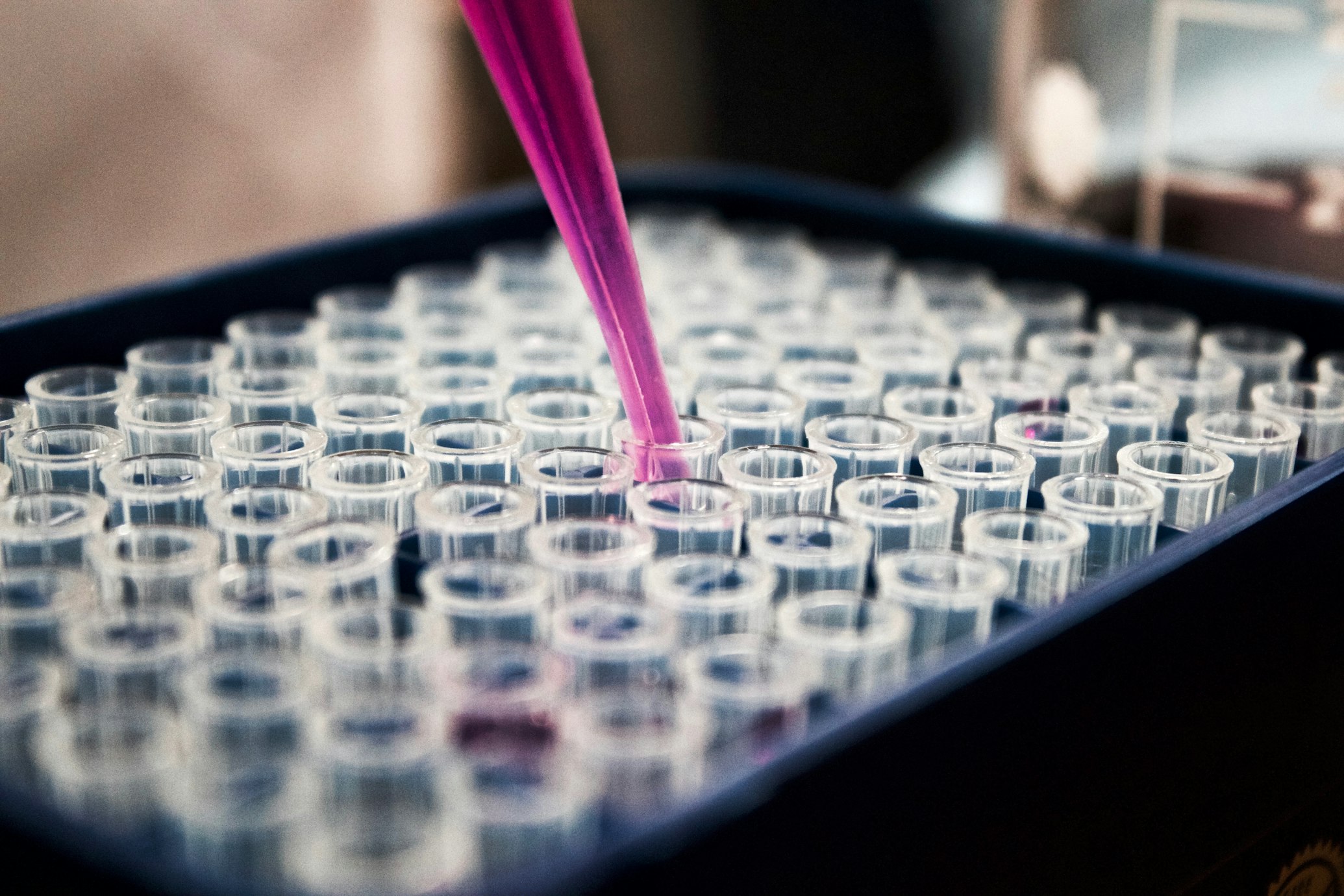Seeing Through the Murk
How Organic and Inorganic Nanoparticles Illuminate Water's Hidden Worlds
The Deep Blue Challenge
Water covers 71% of Earth's surface, sustains life, and holds secrets—from elusive pollutants to early disease biomarkers. Yet, its very ubiquity poses a problem for scientists: how to detect faint biological or chemical signals in an environment that quenches light, scatters energy, and masks molecular whispers. Enter nanoparticles—engineered marvels smaller than a blood cell—that act as ultra-bright beacons in aquatic labyrinths. These tiny sentinels, crafted from organic or inorganic materials, are revolutionizing environmental monitoring, medical diagnostics, and even cancer therapy by making the invisible visible 3 5 .

I. Nanoparticles 101: Organic vs. Inorganic Scouts
Organic Nanoparticles
Derived from carbon-based molecules, these particles excel in biocompatibility and biodegradability. Their structures—often inspired by biology—include:
- Liposomes: Spherical vesicles that trap fluorescent dyes within water-resistant lipid bilayers, shielding them from aqueous quenching 4 .
- Polymeric NPs (e.g., PLGA): Tunable "containers" that embed sensors or drugs, releasing them in response to pH or enzymes .
- AIEE Luminogens: Special fluorophores (e.g., TPEFA) that brighten when aggregated—counterintuitive to conventional dyes—making them ideal for aqueous environments 8 .
Inorganic Nanoparticles
Metallic or mineral-based, these offer unmatched stability and tunable optical properties:
- Quantum Dots (QDs): Semiconductor nanocrystals (e.g., CdSe) that emit sharp, size-dependent colors. A 5 nm QD glows green; 3 nm shines blue 3 .
- Gold Nanoparticles: Scatter light intensely, enabling single-particle tracking in murky water via photoacoustic imaging 3 9 .
- Lanthanide-Doped NPs (e.g., NaYFâ‚„:Nd³âº): Ignited by near-infrared (NIR) light, they emit through "down-shifting," bypassing water's absorption peaks to avoid heating 5 .
II. Breakthrough Experiment: Water-Insensitive Nanoparticles (WINPs) Conquer Quenching
The Problem
Traditional NIR probes like upconversion nanoparticles (UCNPs) require 980 nm light, which excites water molecules—causing signal loss and damaging heat 5 .
The Solution
Researchers designed WINPs: core-shell nanoparticles (NaYFâ‚„:5%Nd³âº@NaYFâ‚„) that absorb and emit within the "water-transparent" NIR window (800 nm → 865 nm) 5 .
Methodology: Step by Step
- Synthesis: Cores grew via thermal decomposition of lanthanide salts. Inert NaYFâ‚„ shells were added to coat surfaces, suppressing vibrational quenching by water 5 .
- Ligand Engineering: Oleic acid coatings (hydrophobic) were replaced with dopamine hydrochloride, enabling water dispersion 5 .
- Testing: Single-particle spectroscopy compared WINPs to conventional UCNPs (NaYFâ‚„:48%Yb³âº,2%Tm³âº) under dry vs. aqueous conditions. Power density varied from 5–1,000 W/cm² to measure brightness stability.

Results & Analysis
- Quantum Yield (Q.Y.): WINPs achieved 22.1% Q.Y.—7× higher than UCNPs (3.1%)—due to minimized cross-relaxation between Nd³⺠ions 5 .
- Thermal Stability: After 5 minutes of irradiation, WINPs heated water by only 2°C vs. 15°C for UCNPs, eliminating sample damage 5 .
- Sensitivity: Detected avian influenza viruses (AIVs) in opaque swabs at 100 mW/cm²—15× lower power than UCNPs 5 .
| Parameter | WINPs | UCNPs |
|---|---|---|
| Quantum Yield (%) | 22.1 ± 0.9 | 3.1 ± 0.3 |
| Detection Power | 100 mW/cm² | 1,500 mW/cm² |
| Heating in Water | Minimal (Δ2°C) | Severe (Δ15°C) |
| Sample Type | Sensitivity | Specificity | AUC |
|---|---|---|---|
| Avian Stool (n=65) | 100% | 100% | 1.00 |
III. Hybrid Architectures: Best of Both Worlds
To overcome organic instability and inorganic rigidity, scientists fuse them:
Silica-Encapsulated AIEE NPs
TPEFA@SiO₂ particles show 445× brighter fluorescence in water than free dyes, with silica preventing aggregation 8 .
Magnetic-Optical Combos
Iron oxide cores + gold shells enable MRI-guided pollutant sensing, with magnetic separation enriching trace analytes 7 .
| Hybrid Structure | Function | Target Application |
|---|---|---|
| TPEFA@SiOâ‚‚ | Enhanced fluorescence via AIEE | Cellular imaging in serum |
| Fe₃O₄@Au | Magnetic concentration + Raman signal | Heavy metal detection in H₂O |
IV. The Scientist's Toolkit: Essential Reagents for Aquatic Sensing
| Reagent/Material | Role | Example Use |
|---|---|---|
| NaYFâ‚„:5%Nd@NaYFâ‚„ | Core-shell WINP | Low-power virus detection |
| Dopamine Hydrochloride | Ligand for water dispersion | Surface functionalization |
| cRGD Peptides | Targeting ligands (binds αvβ3 integrin) | Tumor imaging in blood |
| AIEE Molecules (TPEFA) | Aggregation-induced emission enhancers | Stable bioimaging in aqueous media |
| Liquid-Phase TEM Chips | Microfluidic imaging chambers | Real-time nanoparticle tracking in Hâ‚‚O |
V. Future Horizons: From Smart Microscopes to Eco-Design
AI-Powered Motion Decoding
Tools like LEONARDO (a physics-informed AI) analyze nanoparticle diffusion in water, predicting pollutant interactions from 38,000+ trajectories 6 .
Light-Tuned Nanoshapes
UV-directed synthesis crafts uniform silver triangles, boosting signal consistency in biosensors 9 .
Biogenic Nanoparticles
Algae-synthesized gold NPs offer eco-friendly, high-yield alternatives for water-quality monitoring .
"Precision at the nanoscale isn't just revolutionary—it's a beacon guiding us toward cleaner water, earlier diagnoses, and a clearer future"
Conclusion
Nanoparticles have transformed water from an adversary into an ally for sensing and imaging. Whether revealing hidden viruses with WINPs, amplifying signals through hybrid designs, or leveraging AI to decode nano-dances in droplets, these tools illuminate the deepest corners of our aquatic worlds.